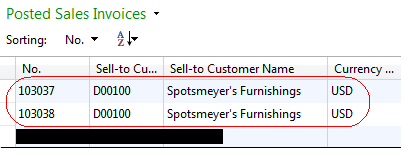When a custom mobile client for Dynamics Nav is needed, there are a couple of ways to implement that. A couple of questions need to be answered, major decisions have to be made, especially, if you do want use the app not only for yourself, but you want to provide the app in online stores, provide it your customers.
Using ready-to-use solutions:
- Anveo: Full mobile client for Dynamics Nav especially for Sales People. Provides offline working.
- Mobile Nav: Ready-to-use mobile client, customizable, extensible, can be used online and offline (!), Secure comunication, barcode scanning, direct printing from device, multilingual; available for Android, IOS, Windows; usable for Nav 2009 R2 – Nav 2016
- Sana Mobile: similar features as ‘Mobile Nav’, but only available for IOS (Apple devices: IPhone and in the near future also available for IPads). The app is optimized for sales agents.
- Dynamics Mobile: similar features as Mobile Nav
Starting from scratch:
This is maybe the more expensive and more time consuming variant, but you can develope a full custom solution. For the mobile app you need an Sdk according the OS (Android, IOS, Windows). At the end it could be that you have to develope the mobile client 3 times. You have also to decide, if you want the get an online only app or if it also usable offline. Alternatively you could develope a web solution, which runs in the device browser.
The mobile app is then connected to the Dynamics Nav system with Nav web services. Nav web services are nav objects like codeunits and pages, which are so called published as .net web services, they are based on the SOAP protocol. For details goto here. If you go that way and want to use nav web services, i recommend NOT to use standard nav objects, especially not to use pages, because that is unsecure and you publish much more functionality than you want or need. Nav web services based on SAP are available since Nav 2009. Since Nav 2013 ODATA is provided, a new web service technology, quite faster, but with that Nav version only for read operations. Since Nav 2015 ODATA is usable for read AND write operations.
Prepare you project:
Start with a market study:
- What are the existing solutions?
- Are they suitable for you, are they customizable?
- Are they usable online and offline, if needed ?
- Which platforms are supported (Android, IOS, Windows), which do you need/want ?
Features:
- What features, functions do you really want/need in your app? The few the better !!
- Only provide the really needed functions (cheaper, faster): i suggest start for the first version with item list, customer list, vendor list, sales orders, purchase orders; additional the possibility to view, maybe edit the entries.
Users:
- Which users do you target: “normal” end users, sales persons, CEOs? Different types of users may need different functions, different interfaces.
- Ask some of your customers what they would expect from your mobile app
Interface:
- The Gui, the interface of the app is the main thing. Always start with the gui; it should be cool, easy to use, should make the WOW effect. You’ll need a graphic designer for the gui.
- Create the custom codeunits with the needed functions AFTER the gui, not vice versa, because that won’t work, will end in a crashed project.
so have fun with your mobile app project.
cheers




















